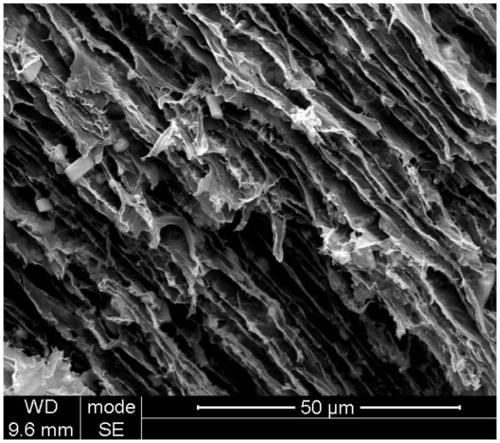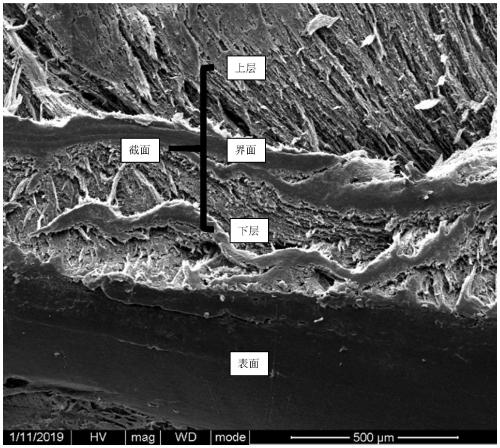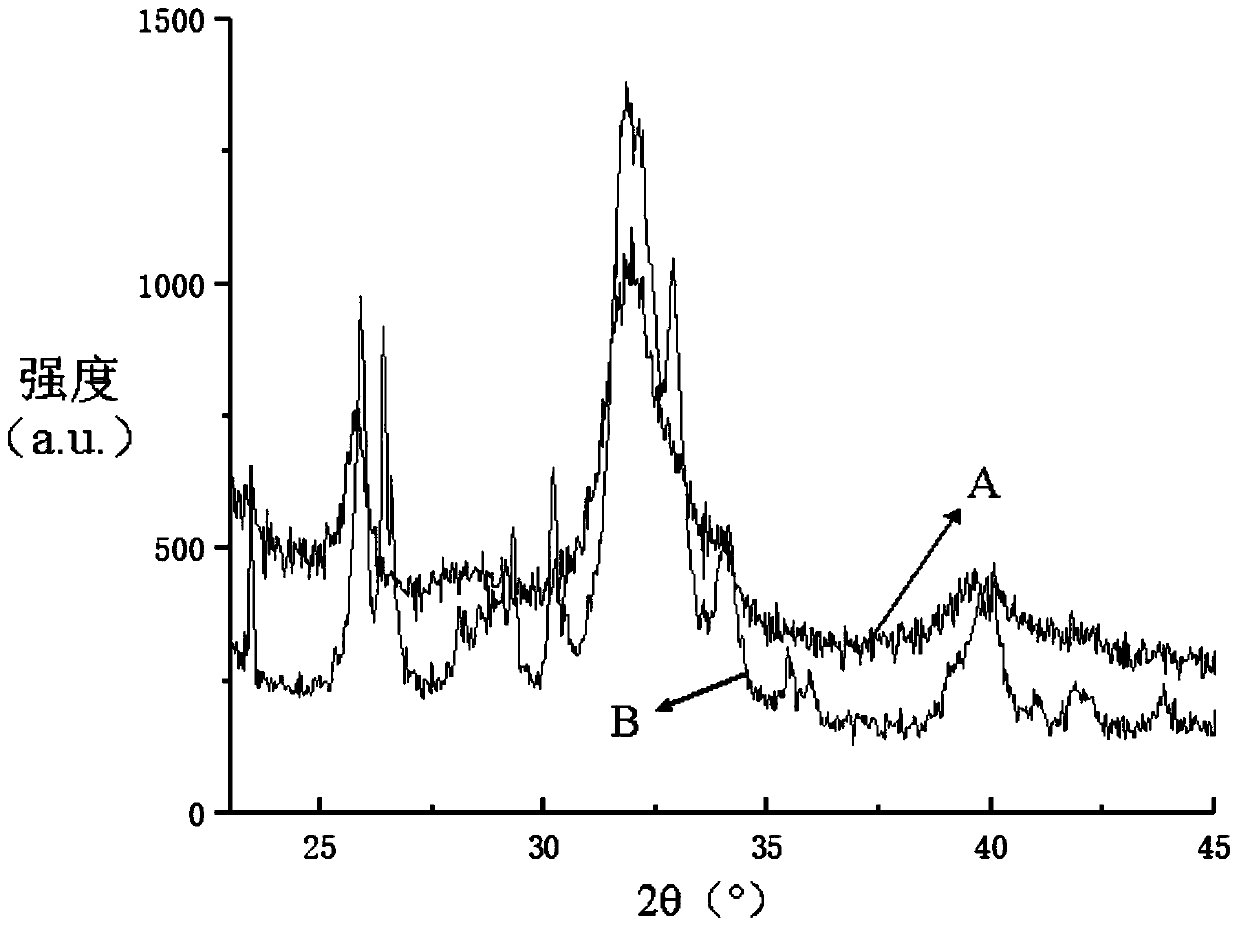Preparation method of conductive double-layer hydrogel for integral regeneration of bone and cartilage by electrical stimulation
A hydrogel and osteochondral technology, applied in tissue regeneration, prosthetics, medical science, etc., can solve the problems of poor host tissue integration, poor mechanical properties, poor repair effect, etc., to improve mechanical properties, good Tissue adhesion, improve the binding effect
- Summary
- Abstract
- Description
- Claims
- Application Information
AI Technical Summary
Problems solved by technology
Method used
Image
Examples
preparation example Construction
[0028] A method for preparing a conductive double-layer hydrogel for electrical stimulation of osteochondral integral regeneration, comprising the following steps:
[0029] Step 1: Disperse conductive particles and dopamine monomers in water to form a suspension. The total concentration of dopamine and conductive particles in the suspension is 1-20 mg / L, and the mass ratio of dopamine to conductive particles is 0.25-4:1. Adjust the pH of the solution to 8-9 with calcium hydroxide at a concentration of 30-60 mg / L, and stir at 50-90°C for 2-10 hours. After the reaction is completed, calcium hydroxide solution A containing dopamine-modified conductive particles is obtained .
[0030] Step 2: Dissolve polyvinyl alcohol in deionized water to prepare polyvinyl alcohol solution B with a concentration of 200-500 mg / L; after complete dissolution, add calcium hydroxide solution A containing conductive particles modified by dopamine, wherein, The volume ratio of solution A and solution ...
Embodiment 1
[0036] A method for preparing a conductive double-layer hydrogel for electrical stimulation of osteochondral integral regeneration, comprising the following steps:
[0037] Step 1: disperse graphene and dopamine monomers in water to form a suspension, the total concentration of dopamine and graphene in the suspension is 1 mg / L, and the mass ratio of dopamine and graphene is 0.25-4:1. The pH of the solution was adjusted to 8 with calcium hydroxide at a concentration of 30-60 mg / L, stirred at 50°C for 2 hours, and a calcium hydroxide solution A containing dopamine-modified graphene was obtained after the reaction was completed.
[0038] Step 2: Dissolve polyvinyl alcohol in deionized water to prepare polyvinyl alcohol solution B with a concentration of 200 mg / L; after completely dissolving, add calcium hydroxide solution A containing dopamine-modified graphene, wherein solution A The volume ratio of solution B and solution B is 1:1, and mixed solution C is obtained after uniform...
Embodiment 2
[0045]A method for preparing a conductive double-layer hydrogel for electrical stimulation of osteochondral integral regeneration, comprising the following steps:
[0046] Step 1: Disperse single-walled carbon nanotubes and dopamine monomers in water to form a suspension. The total concentration of dopamine and single-walled carbon nanotubes in the suspension is 5 mg / L, and the mass ratio of dopamine to single-walled carbon nanotubes is 1:1. The pH of the solution was adjusted to 8.5 with calcium hydroxide at a concentration of 40 mg / L, and stirred at 60° C. for 3 hours. After the reaction was completed, a calcium hydroxide solution A containing dopamine-modified single-walled carbon nanotubes was obtained.
[0047] Step 2: Dissolve polyvinyl alcohol in deionized water to prepare polyvinyl alcohol solution B with a concentration of 300 mg / L; after completely dissolving, add calcium hydroxide solution A containing dopamine-modified single-walled carbon nanotubes, wherein , the...
PUM
 Login to View More
Login to View More Abstract
Description
Claims
Application Information
 Login to View More
Login to View More - R&D
- Intellectual Property
- Life Sciences
- Materials
- Tech Scout
- Unparalleled Data Quality
- Higher Quality Content
- 60% Fewer Hallucinations
Browse by: Latest US Patents, China's latest patents, Technical Efficacy Thesaurus, Application Domain, Technology Topic, Popular Technical Reports.
© 2025 PatSnap. All rights reserved.Legal|Privacy policy|Modern Slavery Act Transparency Statement|Sitemap|About US| Contact US: help@patsnap.com



